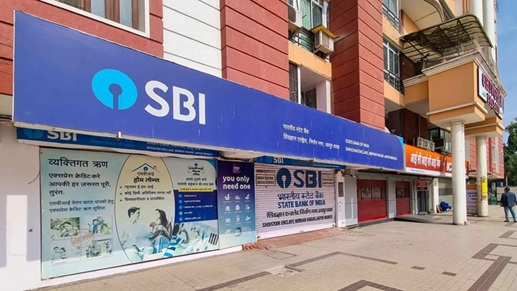(Prelims: Current Affairs)
(Mains, General Studies Paper- 3: Topics related to Indian economy and planning, resource mobilization, growth, development and employment) |

Context
State Bank of India (SBI) is preparing a Qualified Institutional Placement (QIP) financing strategy to raise up to Rs 25,000 crore by 2025.
What is Qualified Institutional Placement (QIP)
- It is a capital raising tool under which listed companies issue equity shares, fully or partially convertible debentures or other convertible securities (excluding warrants) to Qualified Institutional Buyers (QIBs).
- It was introduced in 2006 by SEBI (Securities and Exchange Board of India) with the objective of encouraging Indian companies to reduce their dependence on foreign capital and raise capital in domestic markets.
Key Aspects
- QIBs: These are institutional investors with financial expertise and risk assessment capabilities, such as mutual funds, pension funds, venture capital funds, insurance companies and foreign portfolio investors (FPIs).
- Minimum Allotment: There should be a minimum of 2 allottees for issues up to Rs 250 crore and a minimum of 5 allottees for issues above that.
- Non-participation of promoter: The promoters of the company or their relatives cannot participate in a QIP.
- Process: QIP requires board approval, shareholders approval, preparation of placement documents, pricing and allotment of shares.
Key Features
- Faster capital raising: It is a faster capital raising tool than an IPO or FPO as there are fewer regulatory formalities.
- Pricing: As per SEBI guidelines, the floor price is determined based on the average closing price of the last two weeks.
- Lock-in period: Shares issued through QIP have a lock-in period to prevent immediate selling, which ensures market stability.
- Only for QIBs: It is available only to institutional investors, which reduces market volatility.
- Cost-effective: QIP does not require extensive marketing which reduces costs.
- Flexibility: Companies can have flexibility in pricing and timing depending on market conditions.
SBI's QIP Financing Strategy
- SBI received approval from its board in May 2025 to raise equity capital of up to Rs 25,000 crore through QIP or FPO in one or more tranches in FY 2026.
- This QIP will be the largest QIP ever in India.
- SBI has appointed six leading investment banks ICICI Securities, Kotak Investment Banking, Morgan Stanley, SBI Capital Markets, Citigroup and HSBC Holdings for the process.
- This is SBI's first equity sale attempt since 2017, when it raised Rs 15,000 crore.
Pricing: The exact price is unknown but analysts believe the floor price will be close to SBI's current share price (Rs 809.3 as on July 14, 2025).
Key investor: In the last QIP (2017), Life Insurance Corporation of India (LIC) bought half of the stake and this time too LIC is expected to buy a significant stake.
Benefits of QIP to SBI
- Improvement in CET1 ratio: As of March 2025, SBI's CET1 ratio was 10.81%, the lowest among public sector banks. The Rs 25,000 crore QIP will increase this ratio by about 60 basis points (0.6%), thereby strengthening the bank's financial stability.
- Meeting credit demand: This capital buffer will enable SBI to meet rising credit demand in the future.
- Financial strength: Despite strong profits, SBI's CET1 ratio is not improving. The QIP will address this shortcoming and enhance the bank's risk-absorbing capacity.
- Market confidence: The success of the QIP will reflect SBI's strong financial performance and the confidence of institutional investors.
|
Common Equity Tier 1 (CET1) Ratio
- Definition: It is a measure of a bank's core equity capital as a percentage of risk-weighted assets (RWA). It reflects the bank's financial strength and ability to absorb losses.
- Significance: A high CET1 ratio reflects the bank's solvency and stability. The Reserve Bank of India (RBI) has mandated a minimum CET1 ratio of 8% (including a 2.5% capital conservation buffer).
Other Financial Ratios
- Capital to Risk-Weighted Assets Ratio (CRAR): It is a measure of a bank’s total capital (Tier 1 and Tier 2) as a percentage of RWA.
- Return on Equity (RoE): It measures a bank’s return on shareholders’ equity.
- Gross Non-Performing Assets (GNPA) Ratio: It is a measure of non-performing assets as a percentage of total loans.
|
|
Important Terminology
- Equity Shares: Shares representing ownership in a company, giving the owner a share in the company’s profits and voting rights.
- Convertible Debentures: Debt securities that can be converted into equity shares after a certain period of time.
- Qualified Institutional Buyers (QIBs): Institutional investors defined by SEBI who can participate in QIPs, such as mutual funds, insurance companies and pension funds.
- Floor Price: The minimum price of shares in a QIP, determined based on the average closing price of the previous two weeks.
- Lock-in Period: The period during which shares issued through a QIP cannot be sold, ensuring market stability.
- Risk-weighted assets (RWA): The value of a bank's assets, weighted according to their risk level. It is used to calculate CET1 and CRAR.
- Basis points (bps): One hundredth of a percent (1 bps = 0.01%). For example, 60 bps = 0.6%
- Domestically Systemically Important Banks (D-SIBs): Banks whose failure could have a major impact on the economy, so they need to maintain additional capital.
|